By donating organs, wife, son give family members ultimate gift
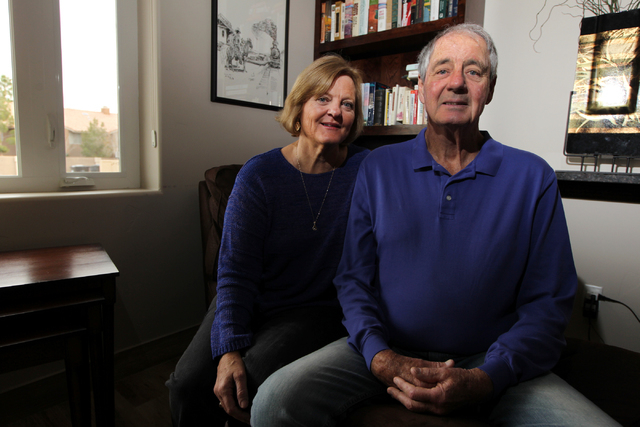
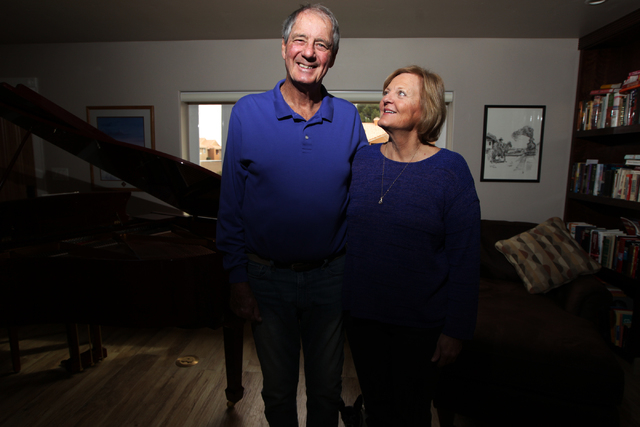
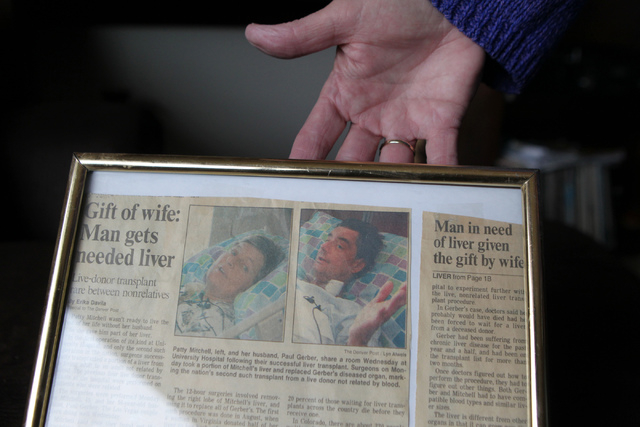
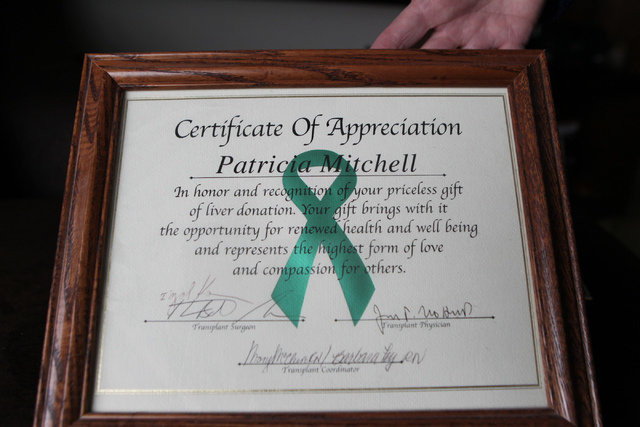
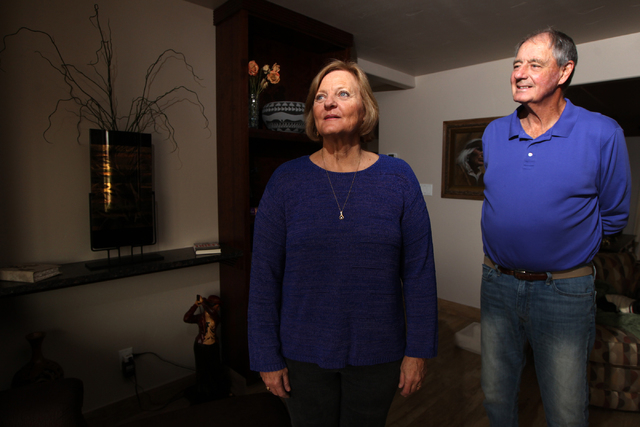
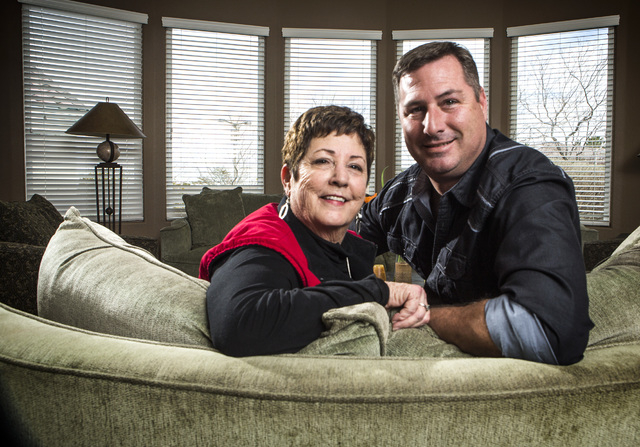

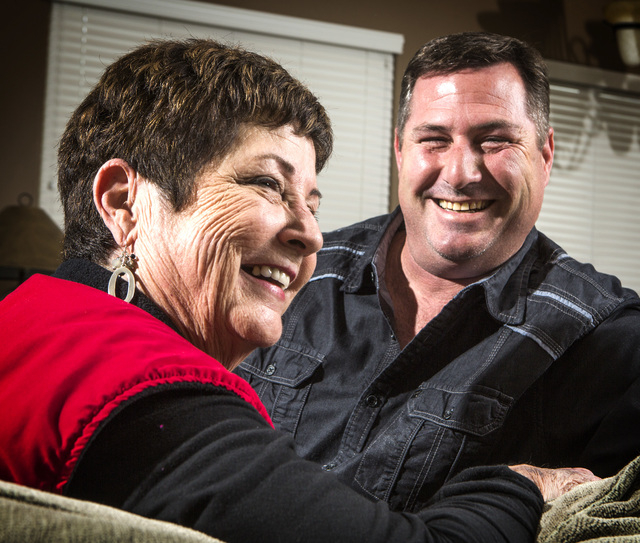
Kiss today goodbye
And point me toward tomorrow
We did what we had to do
Won’t forget, can’t regret
What I did for love
— From “What I Did for Love” by Marvin Hamlisch and Edward Kleban
•••
With Valentine’s Day right around the corner, what gifts are you planning to give? Roses? Heart-shaped boxes of chocolate? Jewelry? Maybe just a sentimental card?
You may have to rethink your gifting strategy if you want to top local residents Patty Gerber and Todd Harrington. Gerber donated 60 percent of her liver to her husband in a groundbreaking procedure in 1998. Harrington donated a kidney to his mother in an operation that happened to take place on Valentine’s Day 2006.
Would you consider being a living organ donor for someone you love? How about for a stranger? Many people don’t realize that humans can live a normal life with one healthy kidney or that a liver can regenerate itself after a majority of it is removed and transplanted into someone else.
According to the program summary report of Scientific Registry of Transplant Recipients, University Medical Center, Nevada’s only transplantation center, performed only three living donor kidney transplants from July 1, 2013, to June 30, 2014. In the same time frame, 57 deceased donor transplants were performed.
Dr. John Ham, medical director of the transplantation center that transplants only kidneys, was recruited in 2010 to lead the program with expansion plans to include liver and pancreas transplantations.
“Living donors have the advantage for both liver and kidneys to get a transplant sooner,” Ham said. “We know that if you’re losing function really quickly and you can get a kidney into someone before they go on dialysis — they are going to live longer especially if it’s a living donor kidney.”
A 2013 report by the United Network on Organ Sharing states approximately 6,000 transplants are made possible each year by living donors.
A WIFE’S GIFT
Former Colorado resident Patty Gerber, 61, didn’t think twice when she learned she might be able to donate 60 percent of her liver in a historic surgery to save her husband, Paul, in December 1998.
“I knew I wasn’t ready to live without him,” she said.
Paul, 73, a building contractor, remembers when the problems with his liver first started.
He was enjoying a trip to Mexico with a group of buddies in 1992 when they all contracted hepatitis A from a breakfast made by a local friend who was infected with the contagious virus. Paul, a heavy drinker, spent nine days in the hospital fighting for his life. His doctor advised him to stop drinking. Four years later, after the routine extraction of his wisdom teeth, Gerber ended up in the hospital when his stomach filled with blood because of liver failure.
This time he listened to the doctor’s advice and gave up alcohol.
“You have to understand, Paul thinks he has nine lives,” Patty said as she explained his brushes with death and their move to Las Vegas in 1997. Somehow he thought the move would be a fresh start and that he would regain his health, she said incredulously.
When a trip to a local emergency room with a temperature of 104 degrees was diagnosed as a urinary tract infection, the Gerbers packed their bags and headed back to Denver to the University of Colorado Hospital’s transplant program, one of the nation’s largest and most respected.
“I literally dropped him at their emergency room’s doorstep,” Patty remembered.
The couple’s non-blood-related adult-to-adult living liver transplant was the first of its kind at University of Colorado Hospital and only the second such operation in the nation. Unfortunately, the hepatic artery and bile duct showed signs of necrosis within days of the surgery.
Paul had several more surgeries in an attempt to save his wife’s liver but ultimately was given the gift of a new liver by the family of a deceased teenager.
Famed transplantation pioneer Dr. Igal Kam performed Patty’s donor surgery and Paul’s second liver transplantation.
“Part of our job is to be honest and straightforward with patients about potential complications,” Kam said. “One of the main goals is to make sure that we’re not harming the donors.”
Asked if she felt her gift was wasted, Patty said, “No, the medical team learned from us so it was a medical advancement.”
A MOTHER’S VALENTINE’S DAY GIFT FROM HER SON
Henderson resident Patti Harrington, 63, was diagnosed 40 years ago with lupus, a chronic, incurable inflammatory disease that attacks the immune system, tissues and organs. Lupus and the medications used to control it ultimately destroyed both of her kidneys.
In 1994, Harrington received a kidney from her sister Leslie.
“It’s very difficult to receive a kidney from someone that you know and love because you can’t thank them enough,” she said.
Unfortunately, 12 years later, the donated kidney was no longer able to control Harrington’s blood pressure and she needed another transplant.
On Valentine’s Day 2006, Harrington’s son Todd donated a kidney to his mother. He was a married 35-year-old father with two small children, ages 2 and 3.
“There was no question in my mind (about donating a kidney). I was ecstatic,” Todd said. “I think anybody would have made that choice. Come on, it’s your mom.”
What was a no-brainer for her son was not an easy decision for a mother.
“That was scary for me because his kids were so young,” she remembered.
Even though Todd towers above his diminutive mother, improved tissue typing and testing for antibodies showed him to be a perfect match. He remembers the surgeon telling him afterward that his kidney “was the size of a football and the largest he had ever seen” and that he had to use his foot to push it into place.
Todd insists the surgery hasn’t changed him. He was back to work in six days with the caveat of no heavy lifting.
“It really hasn’t changed anything except it’s 100 percent different because I have my mom in my life — my kids’ grandma in their lives,” said the 43-year-old father whose children are now 10 and 11.
Are cloned organs in our future? Will the need for donated organs be a thing of the past?
On the horizon, researchers are making advances with 3-D printers, animal xenografting, and stem cells to create tissue.
In the Oct. 9 medical journal Cell, Harvard University professor Douglas Melton and colleagues reported the successful development of a procedure to make millions of pancreatic beta cells, the cells that regulate the amount of insulin secreted.
But the leap from research in the laboratories to implementation in people is far from around the proverbial corner.
Ham has practical advice for people now.
“If we could afford to fund the costs (of living donors) we could take care of the organ shortage,” he said. “There are enough living people out there to donate. It’s a matter of making it convenient.”
For more information about UMC Center for Transplantation call 702-383-2224 or visit www.umcsn.com.
To learn more about organ donation, visit www.organdonor.gov.


















